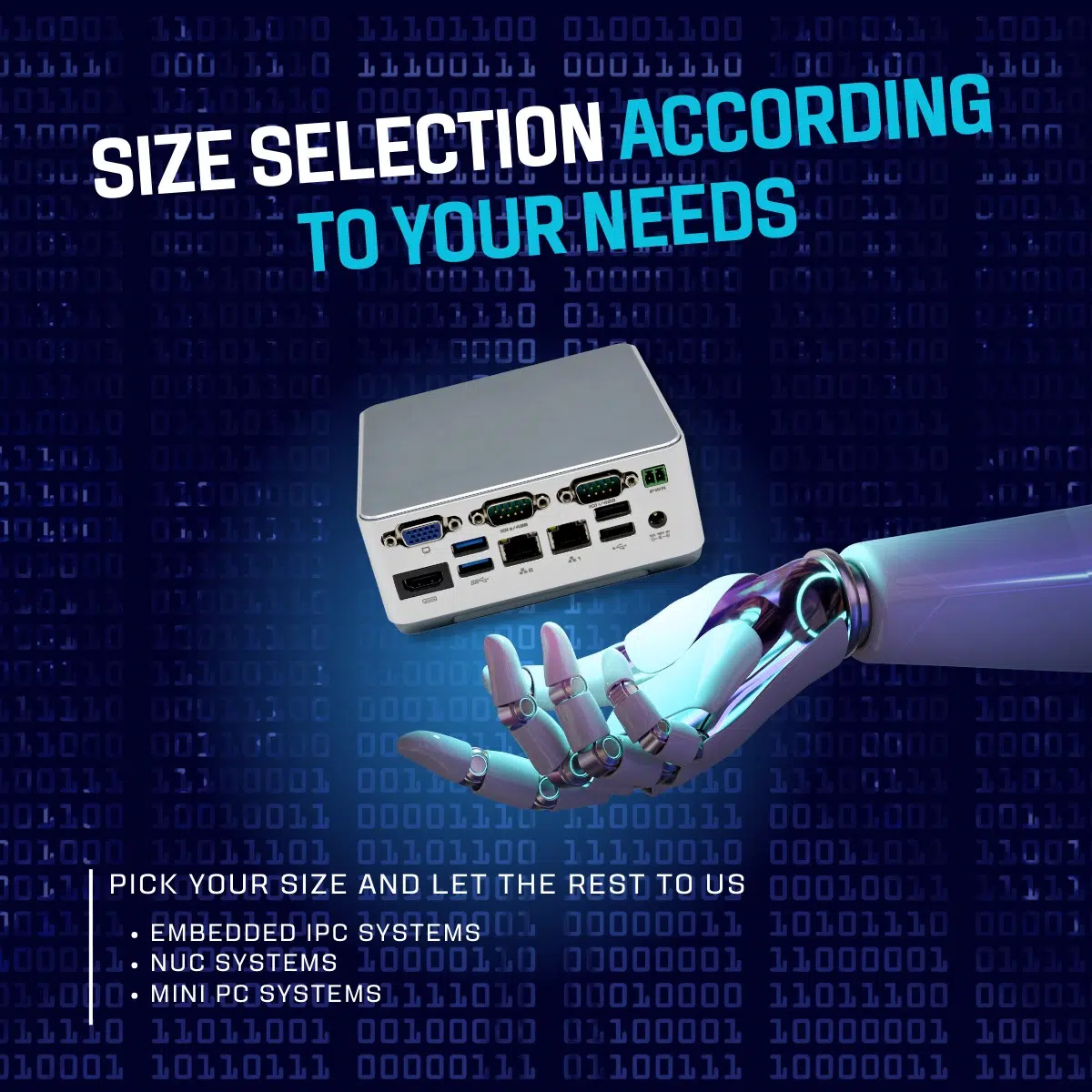Many embedded systems are designed for use in environments where space is limited. Different form factors allow us to select the most suitable size for the available space. Smaller form factors are ideal for compact enclosures, while larger form factors may be used in systems with more room.
Component Compatibility: Form factors ensure compatibility between various hardware components. For example, motherboards and cases must be of the same form factor to fit properly. Different form factors are designed to accommodate specific sizes and types of components, ensuring everything fits and aligns correctly within the enclosure.
Cooling and Thermal Management: The size of the form factor can significantly impact the thermal design of the system. Smaller form factors might have limited space for heat sinks, fans, or airflow, which can affect the system’s thermal performance. Larger form factors often provide more room for efficient cooling solutions.
Expansion and Customization: Embedded PC systems often require the integration of various expansion cards, such as GPUs, network adapters, or specialized interface cards. Different form factors offer varying numbers and types of expansion slots, allowing for customization based on the specific requirements of the embedded application.
Power Efficiency: Smaller form factors often consume less power due to the reduced number of components and smaller physical size. This can be critical in embedded systems where power efficiency is a primary concern, such as battery-powered or energy-efficient devices.
Portability: In some embedded applications, portability is essential. Smaller form factors can make it easier to design and manufacture portable or ruggedized embedded systems, which are commonly used in fields like military, healthcare, or field data collection.
Scalability: Depending on the project’s requirements, scalability may be important. Different form factors allow for scalability options. Larger form factors often support more extensive configurations with multiple CPUs, GPUs, and storage options, while smaller form factors are ideal for single-board computers with basic processing needs.
Cost Considerations: The choice of form factor can also impact costs. Smaller form factors might require custom-designed components, which can be costlier. Larger form factors often use readily available, standardized components, potentially reducing overall system costs.
Environmental Conditions: The environmental conditions in which the embedded PC system will operate can influence form factor selection. Some form factors are better suited for rugged environments due to their durability and resistance to environmental factors like dust, moisture, and temperature extremes.
Longevity and Availability: Availability and longevity of form factors and associated components are crucial in embedded systems, which often have extended product lifecycles. Choosing a popular and well-supported form factor can ensure a stable supply chain for replacement parts and upgrades.
The importance of different form factors in embedded PC systems lies in their ability to provide flexibility, compatibility, and customization options.. By selecting the appropriate form factor, designers can optimize space utilization, thermal management, power efficiency, and overall system performance to meet the unique requirements of their embedded applications.





